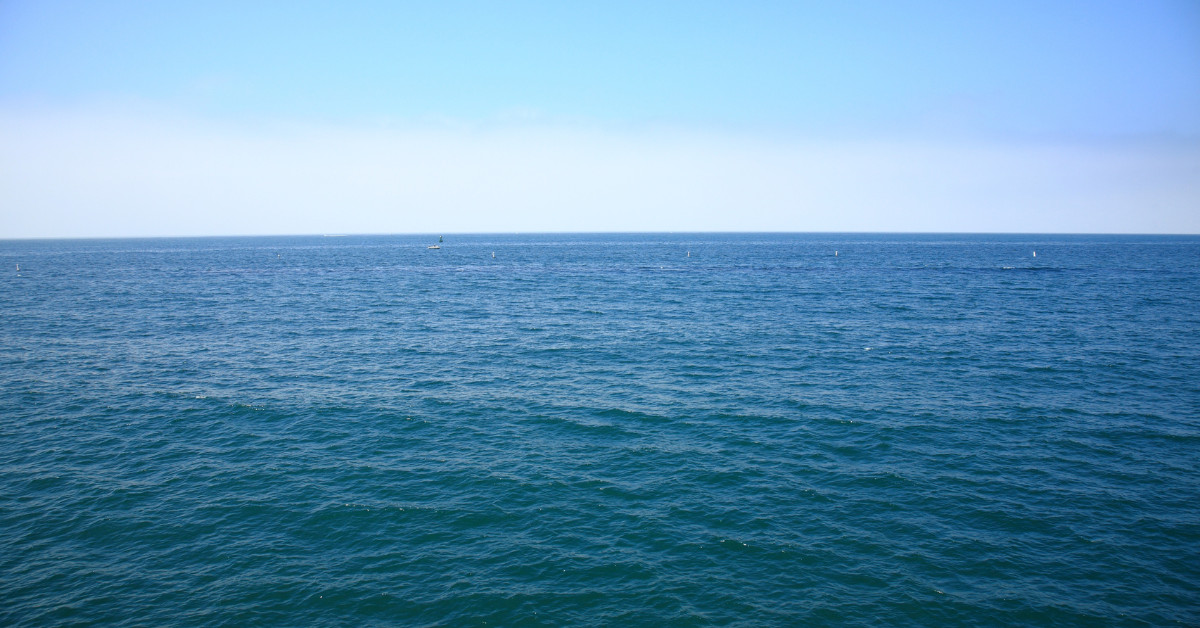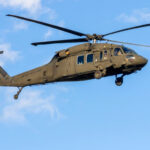Why don’t planes fly over the Pacific Ocean? If you’ve ever gazed at a world map and wondered why airplanes seem to avoid a direct path over the vast Pacific Ocean, you’re not alone. At flyermedia.net, we’ll explore the compelling reasons behind this navigational choice, uncovering the strategic decisions that prioritize safety, efficiency, and operational viability in aviation. Understanding flight paths involves the complexities of weather patterns, fuel efficiency, and emergency landing options, all crucial aspects of aviation safety and route optimization. Learn more about air travel, flight routes, and aviation safety.
1. Is Flying Over the Pacific Ocean Safe?
Yes, but choosing flight paths involves many safety considerations. While modern aircraft are certainly capable of flying long distances over water, several factors influence why airlines often opt for routes that aren’t direct over the Pacific Ocean. These factors include distance, weather, and emergency landing options.
- Distance and Fuel: The sheer expanse of the Pacific Ocean means that a direct flight would require a massive amount of fuel. Aircraft need to carry enough fuel to reach their destination, plus a reserve to account for unexpected delays or diversions. This added weight impacts fuel efficiency and operational costs.
- Weather Patterns: The Pacific Ocean is known for its volatile weather. Severe storms, typhoons, and unpredictable wind patterns can pose significant challenges to aircraft. Airlines carefully analyze weather forecasts to minimize turbulence and ensure a smooth, safe flight.
- Emergency Landing Options: One of the most critical considerations is the availability of emergency landing sites. In the event of a mechanical issue or medical emergency, pilots need to be able to reach a suitable airport as quickly as possible. Flying over land provides more opportunities for emergency landings compared to the vast, open ocean.
2. How Does the Curvature of the Earth Affect Transpacific Flights?
The curvature of the Earth plays a crucial role in determining the shortest distance between two points. While it may seem counterintuitive, a curved route on a map can actually be shorter than a straight line. This is because airplanes often follow what is known as a “great circle route.”
- Great Circle Routes: A great circle is the largest circle that can be drawn around a sphere. On Earth, the shortest distance between two points is always along a great circle. When plotted on a flat map, these routes appear curved, but in reality, they represent the most efficient path for an aircraft to travel.
- Minimizing Distance: Airlines use sophisticated navigation systems to calculate great circle routes and optimize flight paths. By following these curved routes, they can reduce the overall distance traveled, saving time and fuel.
- Wind Patterns: In addition to distance, airlines also consider wind patterns when planning transpacific flights. Jet streams, which are high-altitude winds, can significantly affect an aircraft’s speed and fuel consumption. Flying with the jet stream can shorten flight times and reduce fuel costs, while flying against it can have the opposite effect.
3. What Are ETOPS Regulations and How Do They Impact Flight Paths?
Extended-range Twin-engine Operational Performance Standards (ETOPS) are a set of regulations that govern how far an aircraft can fly from the nearest suitable airport. ETOPS ratings determine the maximum amount of time an aircraft can operate on a single engine in the event of an engine failure.
- ETOPS Ratings: ETOPS ratings are expressed in minutes, such as ETOPS 120, ETOPS 180, or ETOPS 240. An ETOPS 180 rating, for example, means that an aircraft can fly up to 180 minutes on a single engine from the nearest suitable airport.
- Route Planning: ETOPS regulations significantly impact flight planning, particularly for transpacific routes. Airlines must ensure that their aircraft remain within the specified ETOPS range of suitable airports at all times. This often means flying along routes that are not the most direct but offer more opportunities for emergency landings.
- Safety and Redundancy: ETOPS regulations are designed to enhance safety and provide redundancy in the event of an engine failure. By requiring aircraft to stay within a certain distance of suitable airports, ETOPS ensures that passengers and crew can reach safety in a timely manner.
 A commercial airliner gracefully soars above the Pacific Ocean, leaving a trail of white condensation in its wake.
A commercial airliner gracefully soars above the Pacific Ocean, leaving a trail of white condensation in its wake.
4. What Role Does Weather Play in Transpacific Flight Planning?
Weather is a critical factor in transpacific flight planning. The Pacific Ocean is known for its unpredictable and often severe weather conditions, which can significantly impact flight safety and efficiency.
- Storms and Typhoons: The Pacific is prone to powerful storms and typhoons, which can generate strong winds, heavy rain, and severe turbulence. Airlines carefully monitor weather forecasts and adjust flight paths to avoid these hazardous conditions.
- Turbulence: Turbulence is another significant concern for transpacific flights. Clear air turbulence (CAT) can occur unexpectedly and can be difficult to detect. Airlines use advanced weather forecasting tools to identify areas of potential turbulence and adjust flight paths accordingly.
- Icing: Icing can also pose a threat to aircraft, particularly at high altitudes. Ice can accumulate on the wings and other surfaces, affecting the aircraft’s aerodynamics and performance. Airlines use de-icing equipment and procedures to prevent and remove ice buildup.
5. Are There Any Direct Flights Over the Pacific Ocean?
Yes, there are a few exceptions. While many transpacific flights follow curved routes that pass over land, some airlines do operate direct flights over the Pacific Ocean. These flights are typically long-haul routes between major cities in North America and Asia or Oceania.
- Ultra-Long-Haul Flights: Airlines are increasingly offering ultra-long-haul flights that cover vast distances over the Pacific. These flights are made possible by advancements in aircraft technology, such as more fuel-efficient engines and improved navigation systems.
- Route Optimization: Airlines carefully analyze weather patterns, wind conditions, and other factors to optimize direct flight paths. They use sophisticated flight planning tools to minimize turbulence and ensure a smooth, safe flight.
- Fuel Efficiency: Direct flights can be more fuel-efficient than curved routes, as they reduce the overall distance traveled. However, airlines must carefully balance fuel efficiency with safety considerations, such as the availability of emergency landing sites.
6. How Do Airlines Plan for Emergency Landings on Transpacific Flights?
Planning for emergency landings is a crucial aspect of transpacific flight planning. Airlines must identify suitable airports along the route that can be used in the event of a mechanical issue or medical emergency.
- Suitable Airports: Suitable airports are those that meet certain criteria, such as having a runway of sufficient length, adequate air traffic control facilities, and emergency services. Airlines maintain a list of suitable airports along their transpacific routes and update it regularly.
- ETOPS Requirements: ETOPS regulations require airlines to ensure that their aircraft remain within a certain distance of suitable airports at all times. This often means flying along routes that are not the most direct but offer more opportunities for emergency landings.
- Contingency Planning: Airlines have detailed contingency plans in place for a variety of emergency scenarios. These plans outline the procedures for diverting to a suitable airport, communicating with air traffic control, and coordinating with emergency services.
7. What Technological Advancements Have Improved Transpacific Flight Safety?
Technological advancements have significantly improved the safety and efficiency of transpacific flights. Modern aircraft are equipped with sophisticated navigation systems, weather forecasting tools, and communication equipment that enhance situational awareness and decision-making.
- Navigation Systems: Modern aircraft use advanced navigation systems, such as GPS and inertial navigation systems (INS), to precisely track their position and follow planned routes. These systems provide pilots with real-time information about their location, altitude, and heading.
- Weather Forecasting Tools: Airlines use sophisticated weather forecasting tools to monitor weather patterns and predict turbulence, icing, and other hazardous conditions. These tools allow pilots to make informed decisions about flight paths and altitudes.
- Communication Equipment: Modern aircraft are equipped with advanced communication equipment, such as satellite phones and data links, which allow pilots to communicate with air traffic control and airline operations centers from anywhere in the world.
8. How Do Polar Routes Compare to Transpacific Routes?
Polar routes are another type of long-haul flight that presents unique challenges and considerations. These routes pass over the Arctic region and can offer significant time savings compared to traditional east-west routes.
- Distance Savings: Polar routes can be shorter than transpacific routes, particularly for flights between North America and Asia. By flying over the Arctic, airlines can take advantage of the Earth’s curvature and reduce the overall distance traveled.
- Weather Conditions: Polar routes are subject to extreme weather conditions, such as frigid temperatures, strong winds, and magnetic disturbances. Airlines must carefully monitor weather forecasts and adjust flight paths to avoid these hazardous conditions.
- Navigation Challenges: Navigation can be challenging in the Arctic region due to the proximity of the magnetic north pole. Airlines use specialized navigation systems and procedures to ensure accurate tracking and positioning.
9. What Are the Environmental Considerations for Transpacific Flights?
Environmental considerations are becoming increasingly important in the aviation industry. Transpacific flights can have a significant impact on the environment due to their long distances and high fuel consumption.
- Carbon Emissions: Transpacific flights generate a large amount of carbon emissions, which contribute to climate change. Airlines are working to reduce their carbon footprint by investing in more fuel-efficient aircraft, optimizing flight paths, and using sustainable aviation fuels.
- Noise Pollution: Transpacific flights can also contribute to noise pollution, particularly around airports. Airlines are implementing noise reduction procedures and technologies to minimize the impact on local communities.
- Sustainable Aviation Fuels: Sustainable aviation fuels (SAF) are a promising technology that can significantly reduce the environmental impact of transpacific flights. SAF are made from renewable sources, such as algae, biomass, and waste products.
10. How Can I Learn More About Transpacific Flight Planning?
If you’re interested in learning more about transpacific flight planning, there are many resources available. You can explore online courses, attend aviation conferences, or contact aviation experts for guidance.
- Online Courses: Flyermedia.net offers a variety of online courses that cover transpacific flight planning, aviation weather, and other relevant topics. These courses are designed for aviation professionals and enthusiasts alike.
- Aviation Conferences: Aviation conferences are a great way to learn about the latest trends and technologies in the industry. These events often feature presentations and workshops on transpacific flight planning and other topics.
- Aviation Experts: Aviation experts can provide valuable insights and guidance on transpacific flight planning. You can contact aviation consultants, flight dispatchers, or pilots for advice and information.
Planning a transpacific flight is a complex process that requires careful consideration of safety, efficiency, and environmental factors. By understanding the challenges and opportunities involved, you can gain a deeper appreciation for the work of flight dispatchers, pilots, and other aviation professionals who make these flights possible.
For a deeper dive into the world of aviation, including flight planning and weather considerations, explore the resources available at flyermedia.net. Discover how to become a skilled flight dispatcher and contribute to the safety and efficiency of air travel. Whether you’re an aspiring pilot, a seasoned aviation professional, or simply an enthusiast, flyermedia.net is your gateway to the skies.
Are you ready to take your passion for aviation to new heights? Visit flyermedia.net to explore our comprehensive flight dispatch courses and embark on a rewarding career in the aviation industry. Contact us today and let us help you turn your dreams into reality. Located at 600 S Clyde Morris Blvd, Daytona Beach, FL 32114, United States, or call us at +1 (386) 226-6000.
